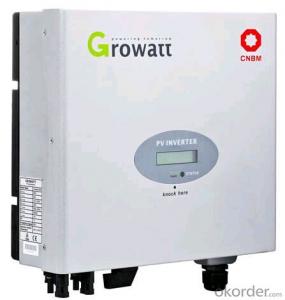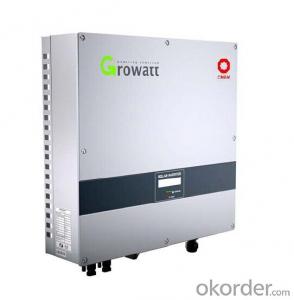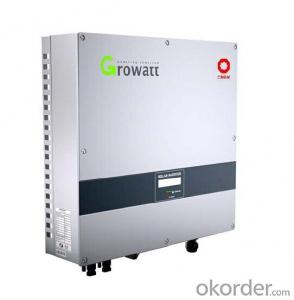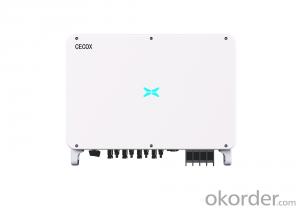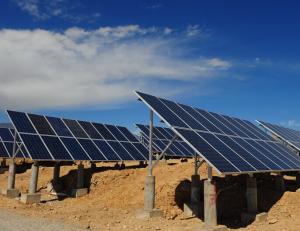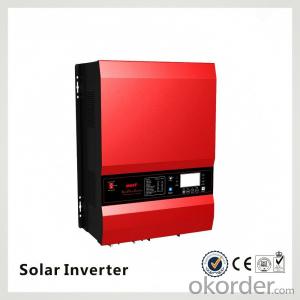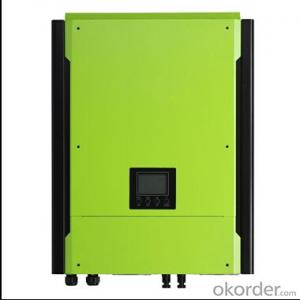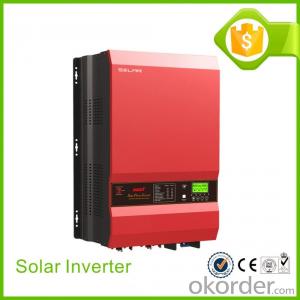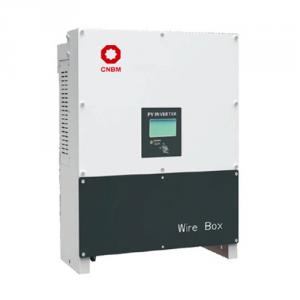Vivint Solar Inverter 3kw On-Grid Inverter with Energy Storage 1kw/2kw/3kw Hybrid Inverter
- Loading Port:
- China main port
- Payment Terms:
- TT OR LC
- Min Order Qty:
- 1000 watt
- Supply Capability:
- 100000 watt/month
OKorder Service Pledge
OKorder Financial Service
You Might Also Like
Introduction
On-grid Inverter with Energy Storage 2kW/3kW hybrid inverter
Pure sine wave output
Microprocessor controlled to guarantee stable charging system
Multiple operations: Grid tie, Off grid, and grid tie with backup
Built-in MPPT solar charger
LCD display panel for comprehensive information
Multiple communication
Green substitution for generators
User adjustable charging current up to 25A
Features
Feed-in is not only choice
In comparison with conventional grid-tie inverter, CNBM-H is able to not only feed-in power to
grid but also store solar power to battery for future usage and directly power to the loads.
Save money by discharging battery for self-consumption first
CNBM-H can save money by using battery energy first when PV energy is low. Until battery
energy is low, CNBM will extract AC power from the grid.
Power backup when AC failed
CNBM-H can operate as an off-grid inverter to provide continuous power even without the grid.
It’s perfect power solution for remote regions or temporary AC power source such as camping or flea market.
Images
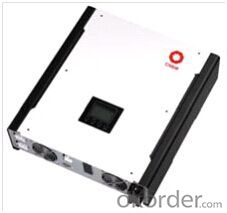

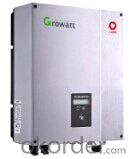

Sepecification


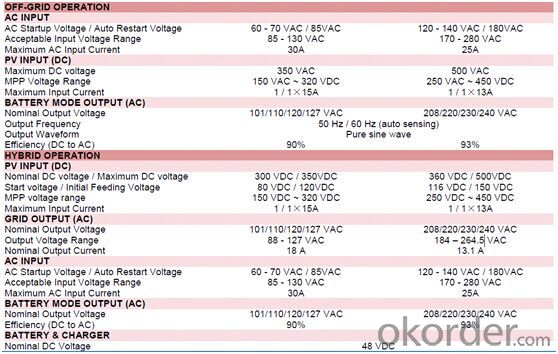
FAQ
Q1: How to choose a right inverter?
A1:Tell us your demand, then our sales will recommend a suitable inverter to you.
Q2: What's the different between inverter and solar inverter?
A2: Inverter is only accept AC input, but solar inverter not only accept AC input but also can connect with solar panel to accept PV input, it more save power.
Q3: How about the delivery time?
A3: 7 days for sample; 25 days for bulk order.
Q4: What is the warranty of inverter?
A4: 5/10 years warranty on CNBM-Solar product.
Q5: How to solve the technical problem?
A5: 24 hours after-service consultancy just for you and to make your problem to solve easily.
- Q: What is the maximum temperature range for a solar inverter?
- The maximum temperature range for a solar inverter typically depends on the specific model and manufacturer. However, most solar inverters are designed to operate within a range of -20°C to 50°C (-4°F to 122°F).
- Q: Can a solar inverter be used with a solar-powered water pumping system?
- Yes, a solar inverter can be used with a solar-powered water pumping system.
- Q: Can a solar inverter be used with a smart home automation system?
- Yes, a solar inverter can be used with a smart home automation system. Many modern solar inverters are equipped with communication interfaces such as Wi-Fi or Zigbee, allowing them to integrate seamlessly with smart home automation systems. This integration enables homeowners to monitor and control their solar energy production, consumption, and storage remotely, and optimize their energy usage for increased efficiency and cost savings.
- Q: Are solar inverters compatible with different solar panel technologies?
- Yes, solar inverters are generally compatible with different solar panel technologies. Inverters are designed to convert the DC electricity produced by solar panels into AC electricity that can be used in homes or fed back into the grid. They are built to work with various types of solar panels, such as monocrystalline, polycrystalline, and thin-film panels. However, it is important to ensure that the inverter selected is appropriate for the specific voltage and power output of the solar panels being used.
- Q: What is the role of a solar inverter in net metering?
- The role of a solar inverter in net metering is to convert the direct current (DC) electricity generated by solar panels into alternating current (AC) electricity that can be used to power household appliances or fed back into the electric grid. It ensures that the electricity produced by the solar panels is synchronized with the grid's voltage and frequency. Additionally, the solar inverter allows for the measurement and tracking of the energy generated and consumed, enabling accurate net metering calculations and billing.
- Q: Can a solar inverter be used in areas with high levels of lightning activity?
- Yes, a solar inverter can be used in areas with high levels of lightning activity. However, it is important to ensure proper installation and grounding measures are in place to protect the inverter from potential damage caused by lightning strikes.
- Q: Can a solar inverter be used in systems with different module orientations?
- Yes, a solar inverter can be used in systems with different module orientations. Solar inverters are designed to convert the direct current (DC) generated by the solar panels into alternating current (AC) that can be used to power electrical devices. They are compatible with various module orientations, including both portrait and landscape orientations. However, it is important to consider the efficiency and performance of the solar system when installing modules with different orientations, as it may affect the overall energy production.
- Q: What is the role of MPPT (Maximum Power Point Tracking) in a solar inverter?
- The role of MPPT (Maximum Power Point Tracking) in a solar inverter is to optimize the efficiency and output of the solar panel system. MPPT technology enables the inverter to constantly track and adjust the operating point of the panels, ensuring that they are operating at their maximum power point, where the highest power output is achieved. This allows the system to capture the maximum amount of energy from the sun, maximizing the overall efficiency and performance of the solar inverter.
- Q: What is the role of fault ride-through capability in a solar inverter?
- The role of fault ride-through capability in a solar inverter is to ensure the uninterrupted operation of the inverter during grid faults or disturbances. It allows the inverter to remain connected to the grid and continue generating power, even in the presence of temporary voltage dips or interruptions. This capability is essential for grid stability and reliability, as it helps prevent power outages and disruptions in the event of faults in the grid.
- Q: How does a solar inverter monitor and optimize energy production?
- A solar inverter monitors and optimizes energy production by tracking the amount of solar energy being generated by the solar panels. It continuously adjusts the voltage and current to ensure the maximum power is being extracted from the panels. Additionally, it monitors the grid conditions and adjusts the output accordingly to ensure compatibility and stability. Through advanced algorithms and real-time data analysis, a solar inverter maximizes energy production by continuously adapting to the changing environmental and grid conditions.
Send your message to us
Vivint Solar Inverter 3kw On-Grid Inverter with Energy Storage 1kw/2kw/3kw Hybrid Inverter
- Loading Port:
- China main port
- Payment Terms:
- TT OR LC
- Min Order Qty:
- 1000 watt
- Supply Capability:
- 100000 watt/month
OKorder Service Pledge
OKorder Financial Service
Similar products
Hot products
Hot Searches
Related keywords
